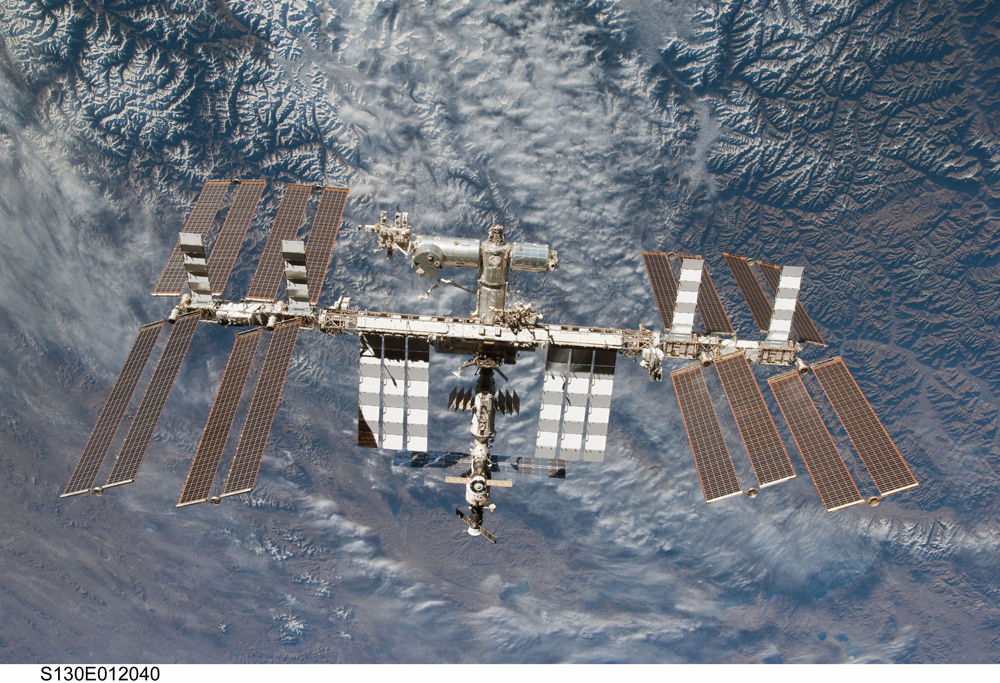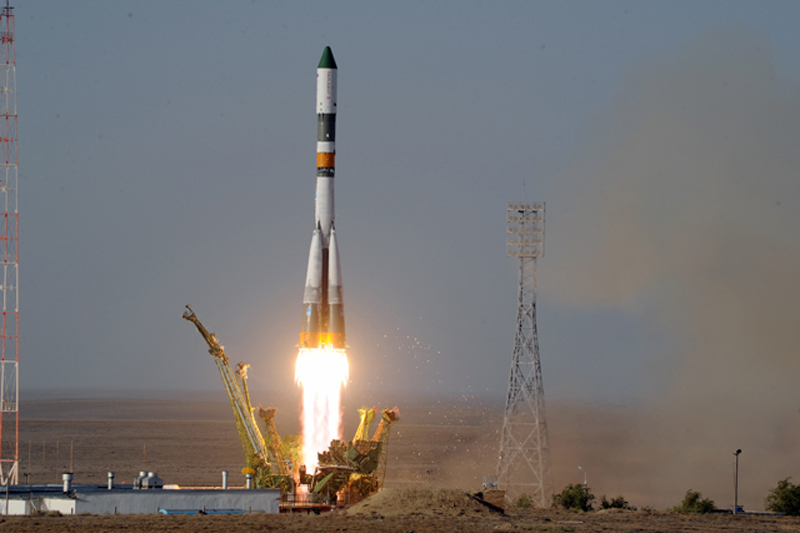Russian Rocket Failure Shouldn’t Force Space Station Evacuation, NASA Tells Lawmakers

The International Space Station likely won't have to be evacuated despite the recent failure of a Russian rocket launched toward the orbiting lab, a panel told U.S. lawmakers today (Oct. 12) on Capitol Hill.
On Aug. 24, Russia's Progress 44 cargo vessel crashed in Siberia after the third stage of its Soyuz rocket failed. That rocket is similar to the one NASA and other space agencies depend on to loft astronauts, raising doubts about whether the issue could be fixed in time for a new crew to get to the station before its three remaining residents depart for Earth on Nov. 22.
A Russian commission recently pinpointed the Soyuz problem as a quality-control issue, not a major design flaw. And an independent NASA team agrees with that assessment, officials announced today, meaning the next manned Soyuz launch should take place as planned on Nov. 14. [Photos: Russia's Lost Cargo Ship Progress 44]
That time frame would keep the orbiting outpost staffed, giving the new three-person crew about five days to learn the ropes from the departing space flyers.
"NASA's confident that our Russian partners identified the most likely failure cause and has a sound return-to-flight plan," Bill Gerstenmaier, associate administrator for NASA's human exploration and operations directorate, told members of the House of Representatives' Committee on Science, Space and Technology.
Fixing the problem
The Russian investigation determined that low fuel feed to the gas generator in the Soyuz's third-stage engine likely caused the Progress 44 crash. The fuel feed issue may have been caused by contamination in the fuel line or a valve.
Breaking space news, the latest updates on rocket launches, skywatching events and more!
After consulting in depth with the Russians, NASA formed its own team to look into the Soyuz problem, Gerstenmaier said.
"They did kind of a background check to make sure that the conclusions the Russians were drawing were reasonable," Gerstenmaier said. "We completed that review today within the agency, and we agree with the basic Russian findings."
Since the Progress 44 incident, the Russians have boosted their quality-control efforts, Gerstenmaier added. For example, they've increased the number of people inspecting Soyuz rockets and are videotaping some key assembly operations at the factory.
The engines for the next two Soyuz launches — the unmanned Progress 45 cargo mission on Oct. 30 and the Nov. 14 crewed mission — were built under the newer, stricter oversight, Gerstenmaier said. [Vote Now! The Best Spaceships of All Time]
So the problem that doomed Progress 44 shouldn't crop up again, the panelists said.
"We're confident that the two launches anticipated — one of Progress and the Soyuz launch, hopefully, in mid-November — will put the current issues to rest and return us to a steady-state operation," said Joseph Dyer, chairman of the Aerospace Safety Advisory Panel.
Station could operate without a crew
When it's fully crewed, the International Space Station (ISS) harbors six astronauts, who each stay aboard for five- or six-month stints. It currently hosts just three space flyers, and the next Soyuz launch would basically replenish this number rather than increase it.
If that launch gets delayed, the station would be completely de-staffed for the first time in more than a decade. But that wouldn't spell disaster for the orbiting lab, the panelists said.
"The station itself can be flown uncrewed from Mission Control," Gerstenmaier said.
Of course, NASA and its international partners would much prefer to keep the orbiting lab fully staffed. Crew members on board can fix maintenance or servicing issues that crop up, for example, which can't be done from the ground.
And with more crew members aboard the station, more scientific research can get done. On a fully de-staffed station, some experiments could go on as before, such as the recently installed $2 billion Alpha Magnetic Spectrometer, which is hunting dark matter, antimatter and cosmic rays.
But many other projects would have to be dropped, or at least postponed, without astronauts on board to conduct them. And NASA hopes it doesn't come to that, officials have said.
"If the ISS needed to be de-crewed, the largest impact would obviously be to crew-tended research," Gerstenmaier said.
You can follow SPACE.com senior writer Mike Wall on Twitter: @michaeldwall. Follow SPACE.com for the latest in space science and exploration news on Twitter @Spacedotcom and on Facebook.

Michael Wall is a Senior Space Writer with Space.com and joined the team in 2010. He primarily covers exoplanets, spaceflight and military space, but has been known to dabble in the space art beat. His book about the search for alien life, "Out There," was published on Nov. 13, 2018. Before becoming a science writer, Michael worked as a herpetologist and wildlife biologist. He has a Ph.D. in evolutionary biology from the University of Sydney, Australia, a bachelor's degree from the University of Arizona, and a graduate certificate in science writing from the University of California, Santa Cruz. To find out what his latest project is, you can follow Michael on Twitter.

